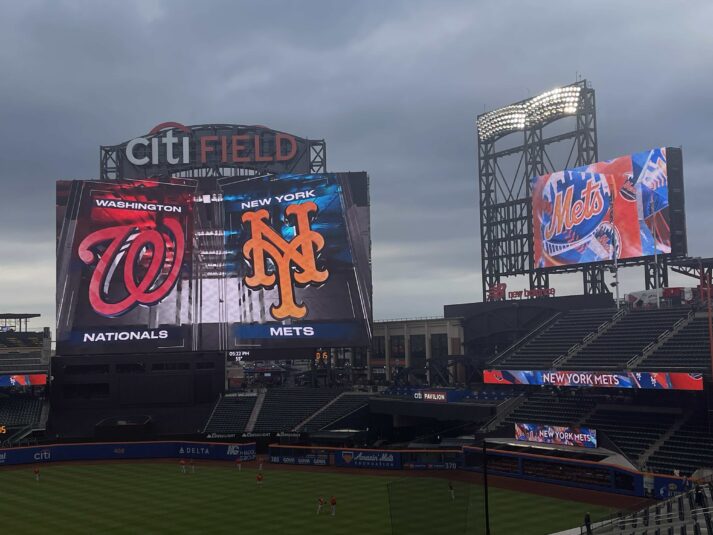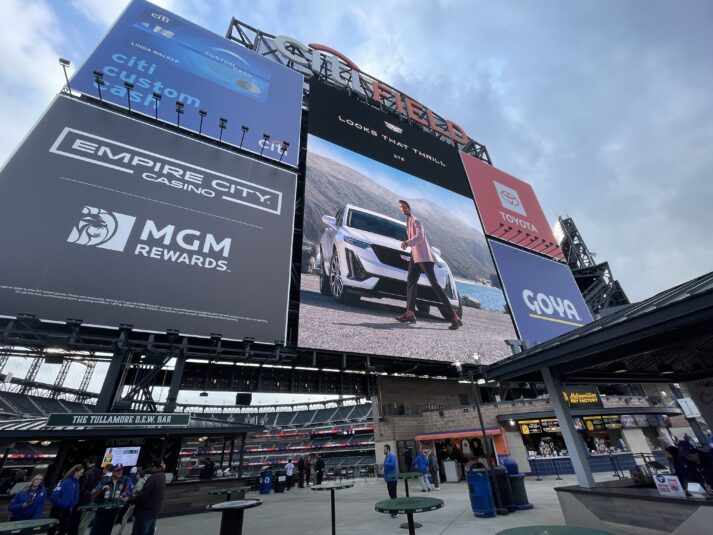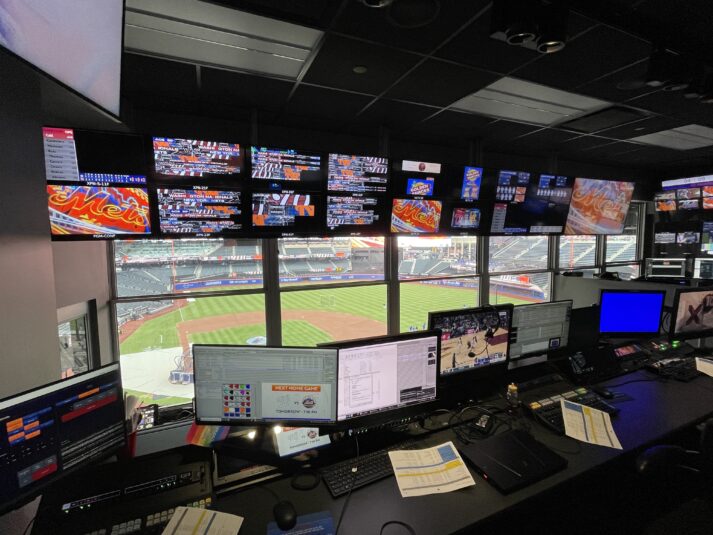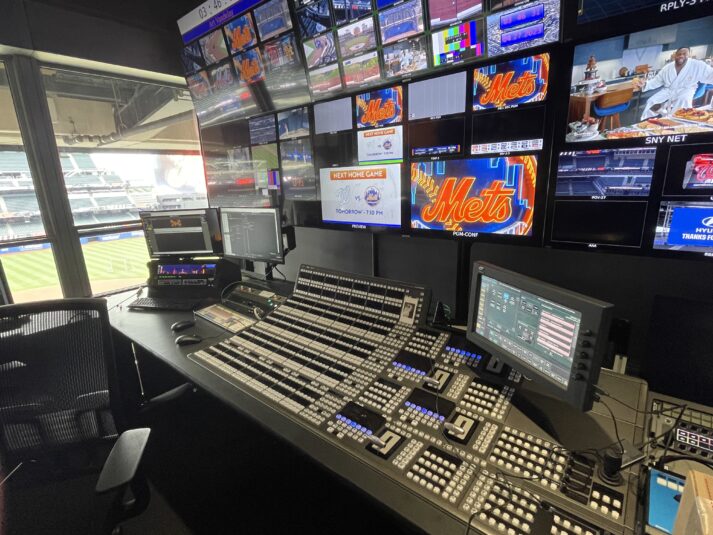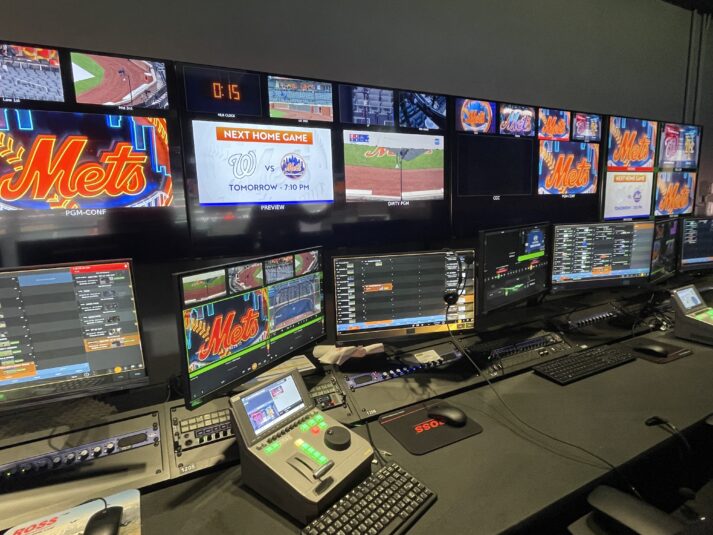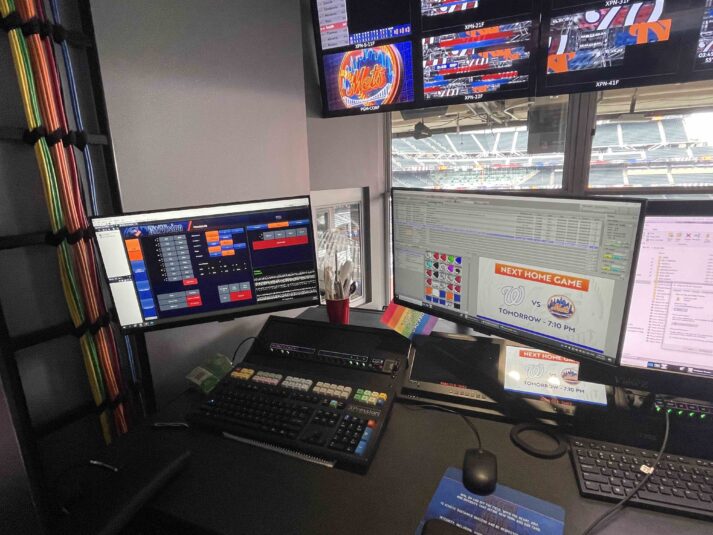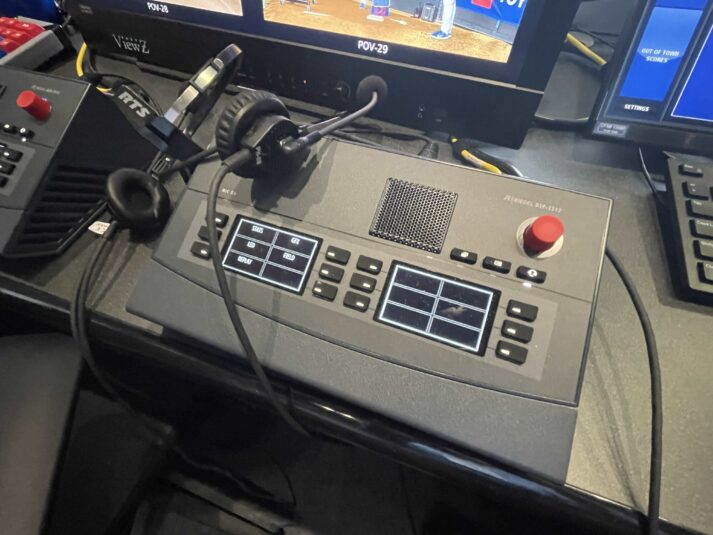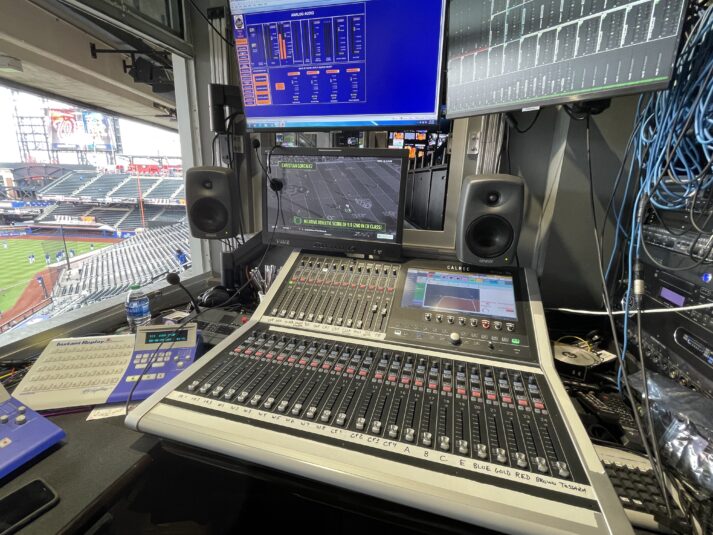Citi Field Gets Largest Videoboard in Major League Baseball, Full IP-Powered Control Room
Phased renovation leads to LED makeover in Flushing, NY
Story Highlights
In his third season as owner of the New York Mets, Steve Cohen is committed to changing the culture of the organization on multiple fronts. On the field, he’s spending money to bolster the roster for a deep run in the postseason and, off the field, has made strides in improving the game-day experience at Citi Field. From a technological standpoint, this includes the league’s largest videoboard and a new IP-capable control room.
“This is a significant investment that was made from the top of our organization,” says Brendan McKeon, executive director, in-game operations, New York Mets. “We’re taking all of this amazing technology, making everything work, and putting on a great show.”
Gradual Renovation: Phased Effort Provides Room for Growth, Learning
Small-scale tech enhancements are often done in one fell swoop, but the extensive overhauls planned for Citi Field required a phased approach spanning multiple seasons. The process began as early as 2019 with the goal of having a plan in place by the middle of the 2020 season and beginning a rollout in the 2021 offseason.
The COVID-19 pandemic disrupted the effort, and, when Cohen assumed majority control of the team in late 2020, he established a new course of action. In 2021, BeckTV and WJHW were tasked with finalizing the equipment to be installed in the new control room. The first phase to be implemented was installation of a handful of new LED displays, including dugout and home-plate ribbon boards, and new super-slow-motion camera systems.
Last season, the control room was ready to go for the first home game, vs. the Arizona Diamondbacks, on April 15, 2022. A little over one year later, the crew has accommodated the league’s largest LED videoboard, which was installed and completed by early this year.
The methodical and gradual integration of the new technologies lightened the load on the crew, McKeon says: “[Installing everything] all at once would’ve been extremely overwhelming. It was good to be in the [control] room for a year. There was a lot of architectural work that had to happen, so we didn’t get the videoboard powered on until about three weeks before Opening Day. It was another week and a half until we could put content on it. It was a very compressed window to get everything online.”
Ramping Up to IP: SoFi Stadium, Globe Life Field Inspire Control-Room Revamp
As early as 2018, Executive Director, Ballpark Technology, Tim Gunkel spearheaded an effort to gain insight into new production workflows from industry colleagues.
“Tim has been a mentor to me for a long time,” says McKeon. “I learned so much working under him for seven years. It has been great to have an ally on our tech team who essentially knows what goes into our shows and the challenges that we face.”
Looking for more inspiration, McKeon and other Mets executives took road trips to pro-sports facilities around the country, seeking insights on new production workflows. Outside of the league, the team headed out west to Inglewood, CA, to check out one of the most technological advanced venues in the world: SoFi Stadium. The building offered knowledge on two fronts: the Infinity Screen by Samsung has an absurd amount of LED, which is similar to the centerfield videoboard in Citi Field, and the Rams’ and Chargers’ shared control room deploys SMPTE ST 2110 workflows.
Within the league, the San Diego Padres’ Petco Park was on their hit list, but the newer Texas Rangers’ Globe Life Field, which opened in 2020, served as a guide to home-plate signage as the first MLB venue to deploy it.
Inside the control room, at the core of the IP infrastructure are a Grass Valley GV Orbit router and Kayenne production switcher. In-venue graphics are created and displayed via Ross Video XPression Tessera. Given the expansive LED real estate, the control room has positions dedicated to certain areas of the ballpark: home-plate–signage operator, left-field– and right-field–signage operators, and so on.
Other notable equipment includes Evertz DreamCatcher for replay, a Calrec Brio 36 mixing console for audio, Riedel SmartPanel for communications, and ScorePAD NOW scoring system for pitch-by-pitch information on the videoboard.
In the lower bowl, the Mets upgraded the complement from two handheld cameras to six hard cameras and three handhelds.
The influx of technology presented an interesting hurdle for a staff handling 81 home games during the regular season.
“It’s a huge challenge because this was all new technology and we made the jump from baseband to IP,” says McKeon. “There are still challenges and a learning curve that we’re tackling every day, but we’re very comfortable with where we are right now.”
MLB’s Biggest: Centerfield Videoboard Boosts Pixel Count to 40 Million
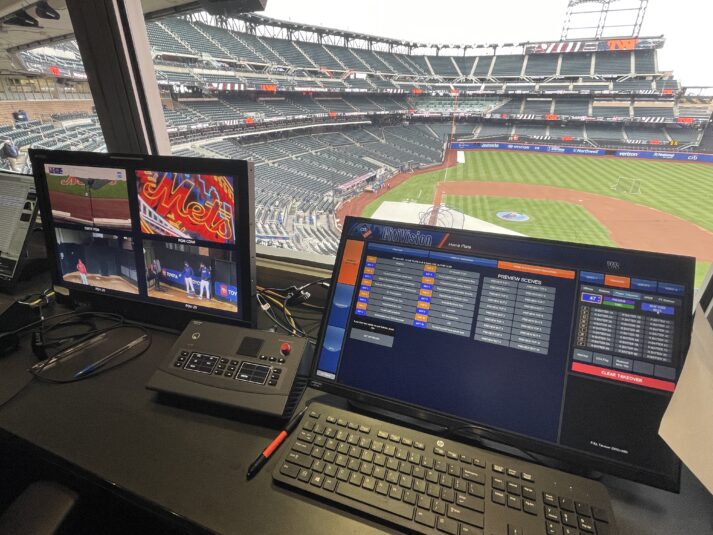
Operators are dedicated to specific sections of LED displays, including this setup for home-plate signage.
As the stadium’s new tech centerpiece, the gargantuan videoboard behind the centerfield wall and the beloved Homerun Apple quickly catches fans’ attention. Built via a partnership with Samsung, the dual-sided videoboard — 17,400 sq. ft. on the front, 6,900 sq. ft. on the back — helped raise the venue’s pixel count of 40 million. Matched with a new right-field auxiliary display, it is a significant addition to the in-venue show.
“[VP, Technology Solutions,] Oscar [Fernandez] has been the Mets’ liaison with Samsung,” notes McKeon, “so all of this brand-new LED at Citi Field was done through his leadership.”
Capable of running shows in HDR, which is planned for the 2024 season to upgrade the content being shown in 1080p, the league’s largest display also comes with a fine margin for error.
“You can’t make a mistake since it’s right in front of you,” he says. “There’s a lot of pressure to make sure that everything is right and operating correctly.”
Finding the Groove: Production Staff Hits Its Stride Early in 2023 Season
Despite the rollercoaster process in moving the project from boardroom to ballpark, each phase of the renovation is up and running. In the second month of the season, McKeon and his staff — Executive Director, Creative Content, Bobby Clemens; Senior Director, Creative Content, Josh Rosenman; Manager, In-Game Operations, Jonathan Baron; and Coordinator, On-Field Operations, Jenna Doak — have a clear vision of what they want to achieve on a daily basis.
“We have a roadmap for where we want to go,” says McKeon. “The next step is how we add more-advanced stats and interactive games [to our run of show]. In addition to our right-field videoboard, we want to create two different replay angles on these displays at the same time. We’ll eventually get there, but, right now, we’re in a good spot to start building on the foundation.”
Compared with where the control room was when McKeon joined the Mets in 2009, the team’s first year at Citi Field, the current state of in-venue production and operations is a drastic improvement. As with many opportunities in live sports-video production, the only way to truly move forward is by seeing how far you’ve come.
“I remember working in an XML file to get a player’s batting average to update in real time on the videoboard and running elements off XDCAM tape,” says McKeon. “It has been a progression, but, in the last seven years, we’ve taken a huge leap forward in everything we do.”
After two more games vs. the Tampa Bay Rays on May 17-18, the New York Mets have seven home series before the All-Star break: Cleveland Guardians (May 19-21), Philadelphia Phillies (May 30-June 1), Toronto Blue Jays (June 2-4), New York Yankees (June 13-14), St. Louis Cardinals (June 16-18), Milwaukee Brewers (June 26-29), and San Francisco Giants (June 30-July 2).
